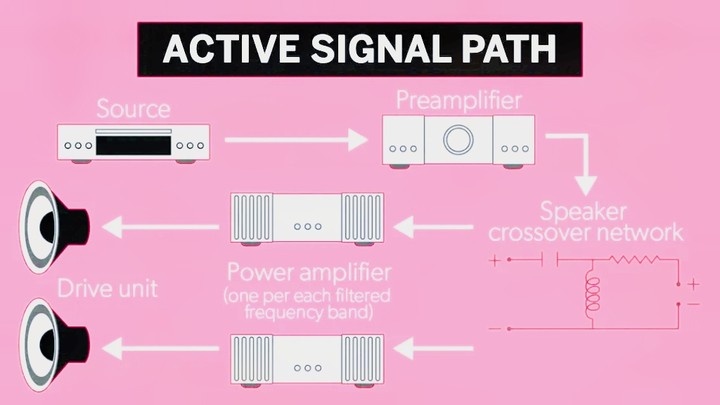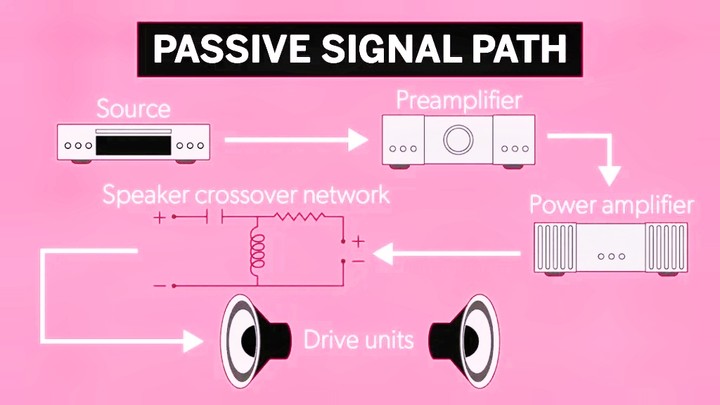The choice between active and passive speakers can be quite troubling in the selection of an audio system in your vehicle. Each speaker type has its own advantages and disadvantages, and the right choice can lead to a satisfactory sound experience in your car. As today we explore the differences between the two, we will assist you in finding the best audio solution suited for your needs and preferences. Whether you’re in need of something sustainable enough to plug and play or want better-quality sound, an understanding of active and passive speakers will help you decide wisely and enjoy your musical moments every time you’re in the driver seat.
There are two speaker types in car audio:active speakers and passive speakers. They work on different principles and therefore require additional equipment to make them operational.
What Exactly Are Active and Passive Speakers?
An active speaker is one complete with its own amplifier inbuilt.They greatly simplify the installation process as they don’t need an independent amplifier.

Conversely, passive speakers require an external amplifier, which connects to the audio source device.The wiring become more complicated and the amplifier matching becomes an added consideration, no doubt adding difficulty to the installation process.

How Do They Differ? What Sets Them Apart?
Driving Method
Active has an integrated amplifier that drives the speaker unit directly, and they simplify the audio signals transmission process. They work all on time by means of direct conversion of sound through the input signals from the audio source; hence there is no further need for external amplifier equipment. As against this is the version of passive speakers that use external amplification in delivering power, hence requiring amplifying the audio signal from the amplifier to drive the speaker unit.
Sound Quality
Usually, the sound quality of active speakers is more finely tuned because the amplifier and the speakers have been precisely matched at the root of the design. This matching reduces signal distortion and ensures a more stable and efficient sound output. The audio performance of passive speakers depends much on the quality and configuration of the separate amplifier. This increases the resistance in line connection and the long-distance signal output, and as a result, a certain degree of signal distortion occurs.
Connections
Active speakers are relatively simple to connect, usually just connecting the audio source directly to the speakers. No additional amplifier is required, thus reducing the burden of wiring. Regular passive speakers need an amplifier to be connected, so they can take the audio output from the source device. In addition the amplifier must be matched to the impedance and power requirements of the speaker, so the requirements will be a little more.
What Are the Pros and Cons of Each?
Active speakers are simple to use because they do not require amplifiers, entirely eliminating that as a complexity in the setup of any such involve. In addition, the design of the built-in amplifier makes the overall system more compact, very suitable for limited space in the car environment. Many active speakers are also built-in volume control, bass enhancement, sound adjustment and other functions, users can easily adjust the sound effect according to personal preferences. This design has disadvantages as well. It is generally less convenient for one looking for upgrading, replacement, or other optioning of the amplifier because there is no freedom in changing an amplifier customarily due to its being built-in.
Passive speakers provide an advantage in the amount of flexibility available because users can pick and upgrade their preferred amplifier according to their preferences, thus allowing extensive room for individual input since sound reproduction quality is paramount in its very essence.Besides, the passive speakers are quite expandable; users can simply expand their sound system according to needs to cater to different quality and power requirements. However, this kind of speaker faces several drawbacks. Its process of installation is a lot more tedious as it requires more connections and also amplifier matching, consuming more time and energy.
Both Have Their Merits, Which One is Better for You?
If you want to consider all sides of a situation and wish for the fastest setup, active loudspeakers will remain number one besides, simpler system devotees would find neither choice nor any complexity to be discussed concerning their car system; they might find active loudspeakers well-suited for them.
Should the demand for sound quality be extraordinarily high, leave aside time and effort in tuning with passive speakers.
Because active and passive speakers are such distinct categories, they cater to different users’ needs.Therefore, your choice should largely emanate from your preferences, budget, and needs concerning sound quality. The active speaker is for owners who don’t have time to install anything else, while the passive speaker is better fashioned for quality-fi-minded audiophiles demanding superior sound quality through a fully customizable system. A proper understanding of the pros and cons of each type and also where they get used will aid in building a car audio system that is to your liking and delivers the best sound quality.
